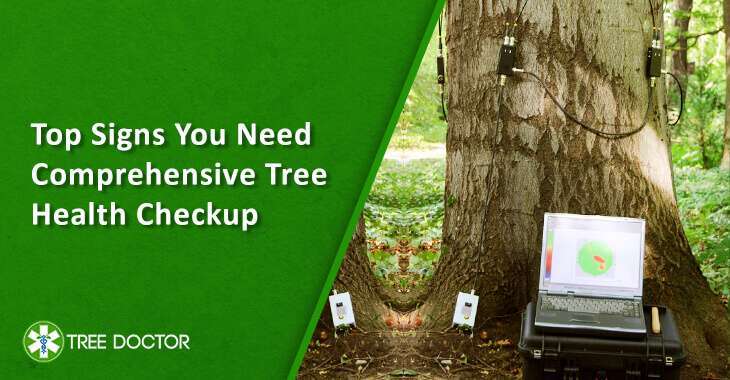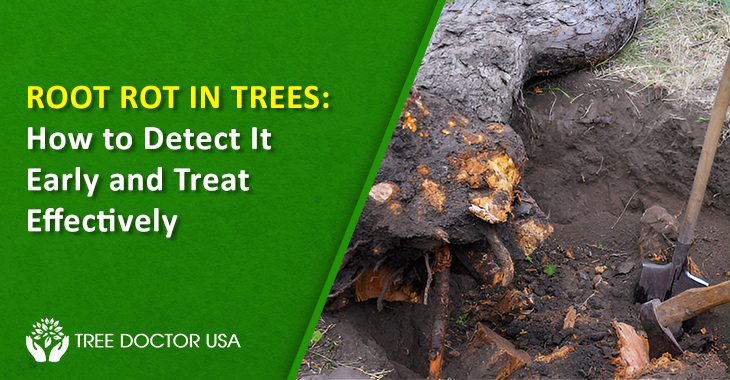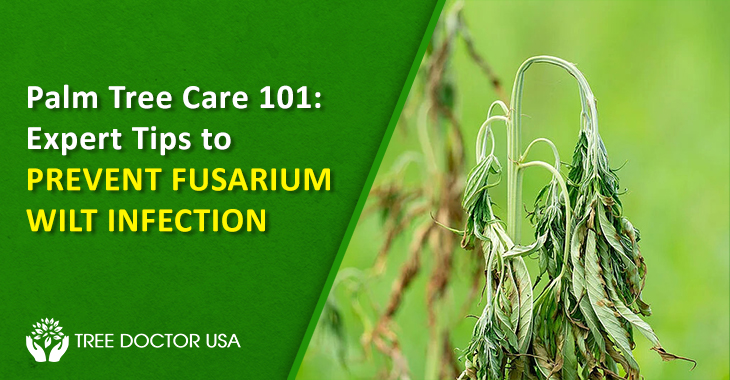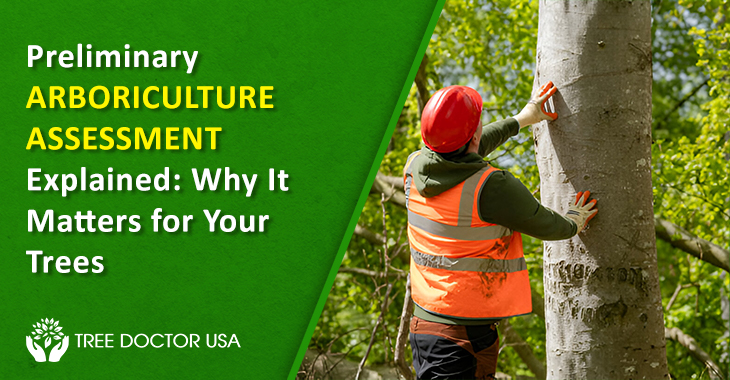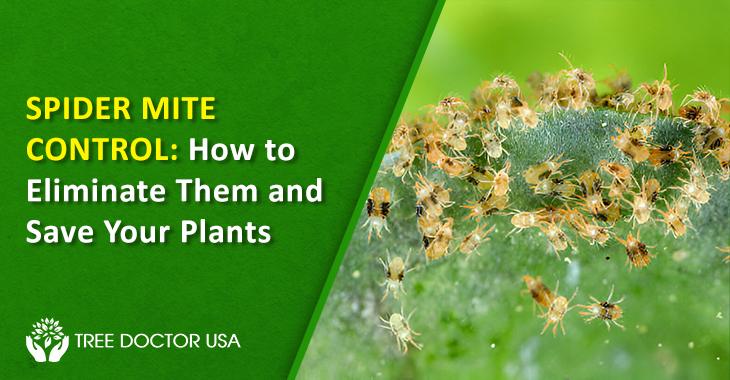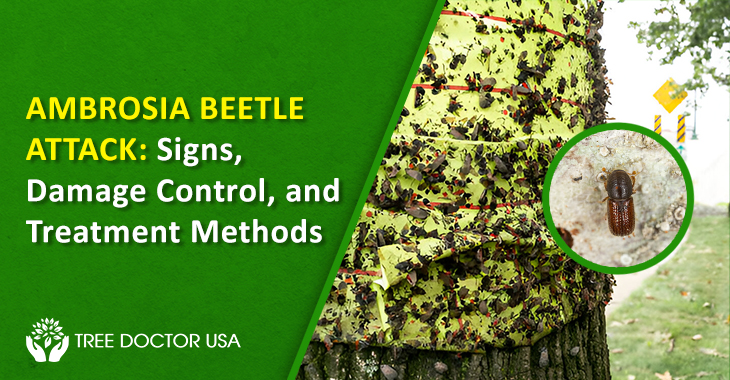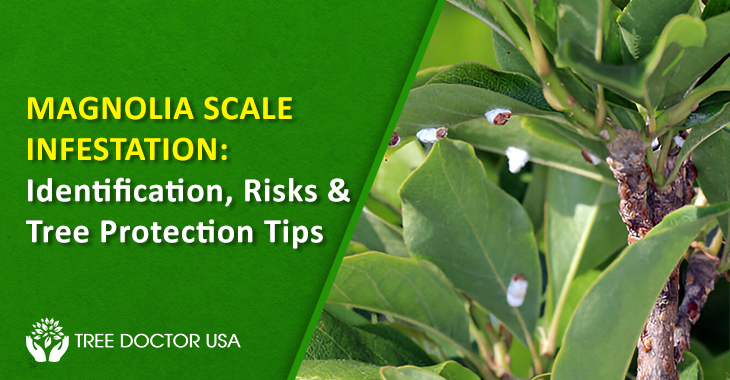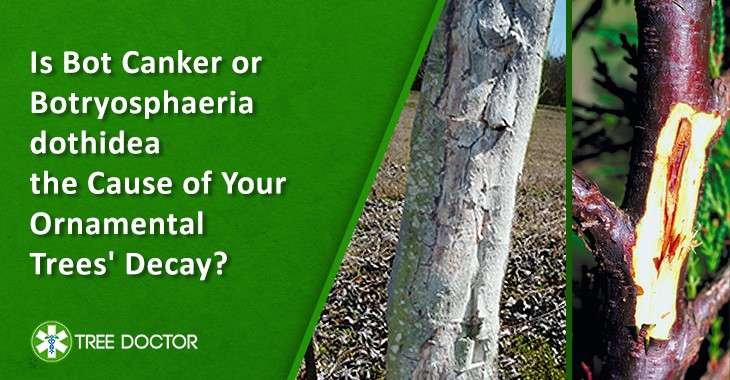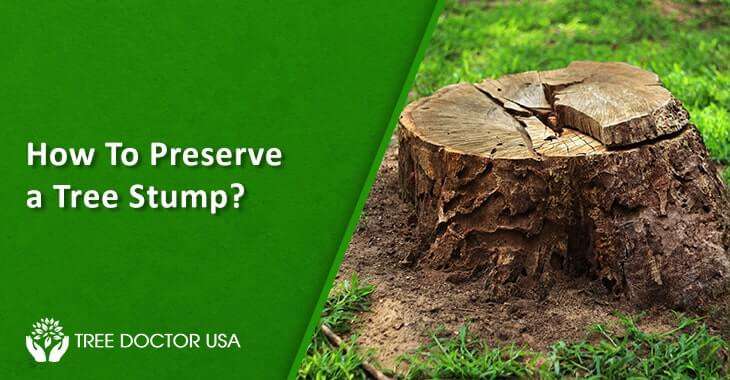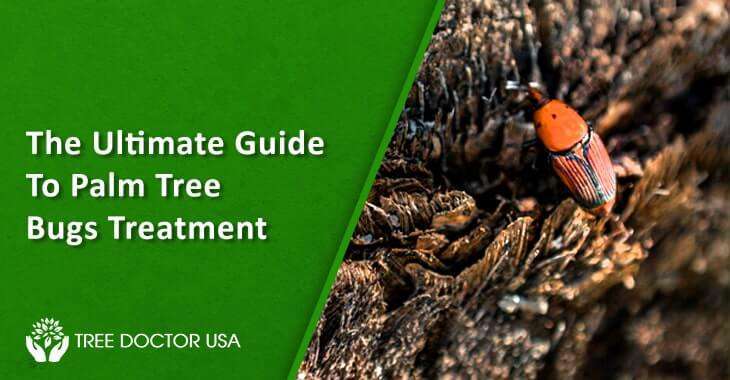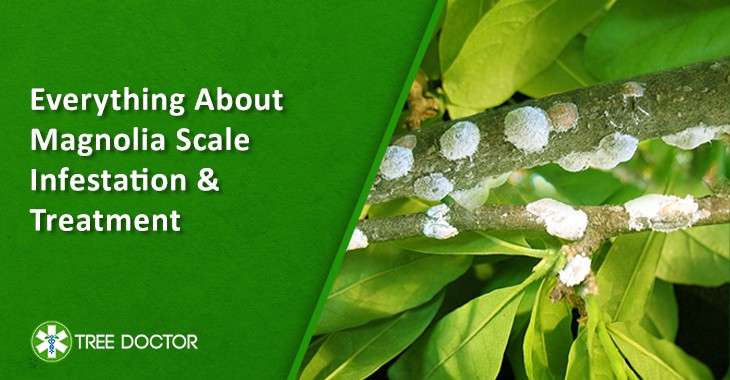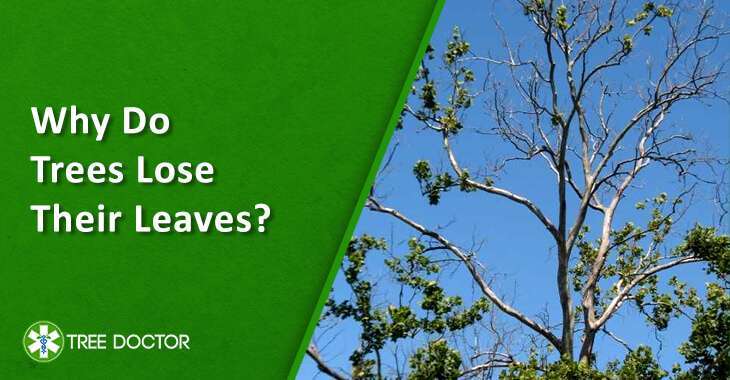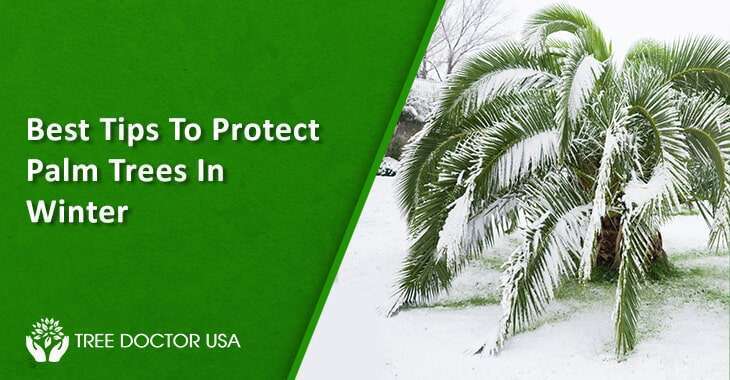Top Signs You Need Comprehensive Tree Health Checkup
Trees, like humans, are living beings. Trees can get sick and die if you do not provide proper care to them. As a result, regular monitoring of the tree’s health becomes crucial. If you love your tree, then observe the condition of your tree from time to time. When you do so, you will notice many unfavorable changes in the tree, which indicates deteriorating tree health.
You may have to deal with a tree problem at some point in your life, such as diagnosing tree diseases or retaining health after a pest attack. In any case, trees are an essential part of your life, and you must ensure that they are healthy all the time. A sick tree will show signs of illness that are easy to spot if you know what to look for. Trees that are not in good health frequently have leaves that are not as vibrant and healthy as they should be. They can turn yellow or brown and even fall off too soon. You can take help from the expert for the accurate sick trees treatment, and free your tree from all stress and invasions.
Signs You Need To Lookout For Tree Health Inspection
Is the crown of the tree thinning? Your tree may be sick due to pest infestations or the spread of the diseases. Usually, unwanted invasions and attacks of disease block the transmission of nutrients and supplements in trees. This will cause leaf loss. It will be more evident on larger and matured trees as they have a lush canopy.
The color of the tree’s leaves can reveal a lot about it. Leaves are an essential component of your tree. They aid in the conversion of solar energy into nutrients. They contain chlorophyll, which is essential for photosynthesis and turns leaves green.
Yellow or brown leaves, as well as leaves that fall prematurely, are indications that you should investigate further. When you notice the size of the leaves is not in proper shape or the color is yellow, suddenly take action. It is only due to the deficiency of micro and macro nutrients and other stresses. These deficiencies can occur due to waterlogging or some soil compaction.
Like a small baby, the branches of the tree will grow every year. But whenever you realize that the size of your tree is not growing properly, immediately take some precautions or expert help. It is a sign that your tree’s entire branches are going to die.
The bark shields the tree from different external stresses affecting health and vigor, such as storms, pests, insects, and diseases. Whenever you find some kind of sappy-like liquid oozing coming out from the trunk or stem of your tree, it indicates issues in the tissues. It is a prominent sign of bacterial or fungal infection. At times, you will even notice the spots of bleeding. Bark Beetles and Boring Insects enter the trunks, causing damage to the tissues.
The trunk is one of the vital parts of the tree because it gives support to all branches of the tree. Also, it is responsible for several functions like water and nutrient transportation. It helps the tree maintain its shape and sturdiness by supporting the crown. The trunk is responsible for water transportation from root to branches of the tree. So, you have to keep an eye for cracks, wounds, cavities, bulges, etc., on the tree. However, all these signs indicate the structural damage of the trunk, and you need to call professionals for tree health management programs.
If your roots are exposed and appear damaged, it is often one of the biggest signs a plant is vulnerable. Tree roots are essential as they anchor the tree to the ground and allow it to absorb nutrients, grow, and maintain health. The lifted ground or roots in severe conditions may disrupt trees’ delicate feeding system.
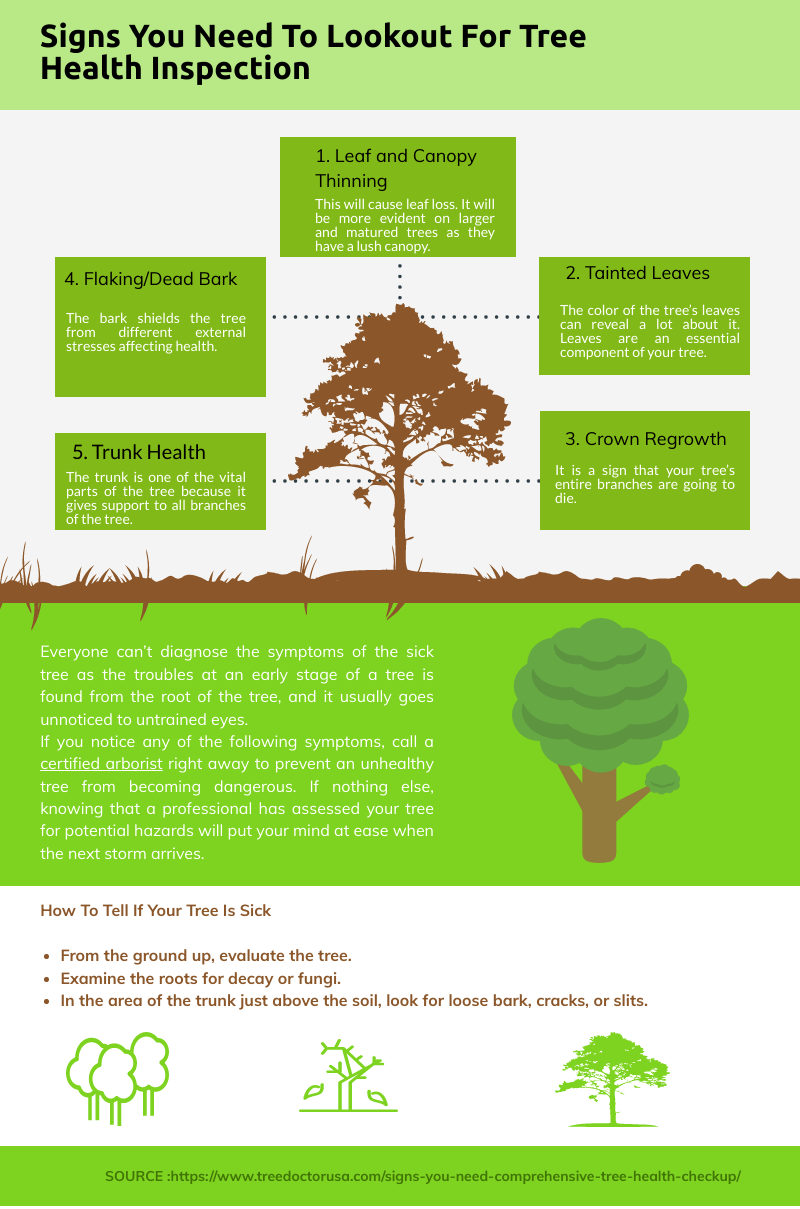
How To Identify Symptoms Of Unhealthy Trees
Everyone can’t diagnose the symptoms of the sick tree as the troubles at an early stage of a tree is found from the root of the tree, and it usually goes unnoticed to untrained eyes.
If you notice any of the following symptoms, call a certified tree health specialist right away to prevent an unhealthy tree from becoming dangerous. If nothing else, knowing that a professional has assessed your tree for potential hazards will put your mind at ease when the next storm arrives. Let’s discuss the symptoms of a diseased tree:
In the winter season, it can be tricky for you to check the tree’s health. An excessive number of broken branches is one observable sign. In the winter winds and ice, all trees will lose some branches. Trees that are suffering from health issues face branch loss issues. Whenever you notice that your tree has improper or thin branches, immediately call the professionals. They will retain the health of the branches.
A leaning tree is another sign of trouble that you can see at any time of year. Strong trunks support the weight of branches and foliage in healthy trees. Normally, the dense wood can withstand the daily assaults of nature. In this regard, you can book your appointment with the experts. They will offer effective treatment to sick trees.
There are other signs to look for as the leaves begin to emerge in the spring. Unsurprisingly, unhealthy trees may have leaves that do not appear healthy. In the spring, you may notice leaves that are slow to develop. Leaves may also be of a different size or color. When the size of the leaves is not proper or not growing properly, it indicates healthcare problems in trees.
Aside from being slow to appear or abnormal in shape, leaves are sometimes completely absent in a section of the tree. When your tree is not giving you flowers and fruits, it must be due to some disease. So when your trees are lacking in giving you fruits and flowers, call experts for optimum tree health management and recover their growth.
Whenever you inspect your garden and notice that mushrooms and fungus are present in the tree surrounding, you need to take prompt action. Mushrooms and fungus are only present if your tree suffers from invasions or stress. It gives you a sign to take immediate precautions or some medical help to protect the health of your tree.
A healthy tree appears to be a normal tree. Its roots, trunk, and branches are all in proper shapes and grow every year. However, some trees appear to have branches growing from the tree’s base. While these are technically shot rather than branches, they are out of place and suggest that the tree may be in trouble.
Finally, the presence of pests is an obvious sign of an unhealthy tree. Other times, you may only see evidence that they were present. Eggs, chewed-up leaves, and sticky residue are signs of infestation. If you notice early that your tree is suffering from pest invasions, it might be easy for you to recover your tree health as soon as possible.
Thus, it is very essential for you to regularly check your tree health. If you pay proper attention to tree health, your tree will not get infected by harmful diseases and insects. If you detect a problem with a tree in an early stage, it also saves you the cost. So, whenever you suspect a problem with trees, plants, and shrubs, don’t haste to call experts for arborist consultation.
How To Tell If Your Tree Is Sick
A thorough visual examination is essential for quickly determining whether a tree requires maintenance or nourishment. Here’s how to properly examine a tree and determine expert assistance:
- From the ground up, evaluate the tree.
- Examine the roots for decay or fungi.
- In the area of the trunk just above the soil, look for loose bark, cracks, or slits.
- Examine the remainder of the trunk for cavities, swellings, or small holes.
- Examine the canopy and the remaining branches for leaning limbs and leaf issues.
- If the tree exhibits any of these symptoms upon visual inspection, contact a tree professional.
Conclusion
Comprehensive family tree health care is crucial in maintaining the health and vigor of trees. It is a great way to enhance the longevity of trees. If your tree is suffering from disease or damage, accurate and timely treatment can retain the health of trees, plants, and shrubs in your landscape. Call Tree Doctor USA to carry out the full inspection of your tree. They will precisely identify what’s wrong with your trees. Also, they will suggest the best course of treatment to make your unhealthy trees lively again.

